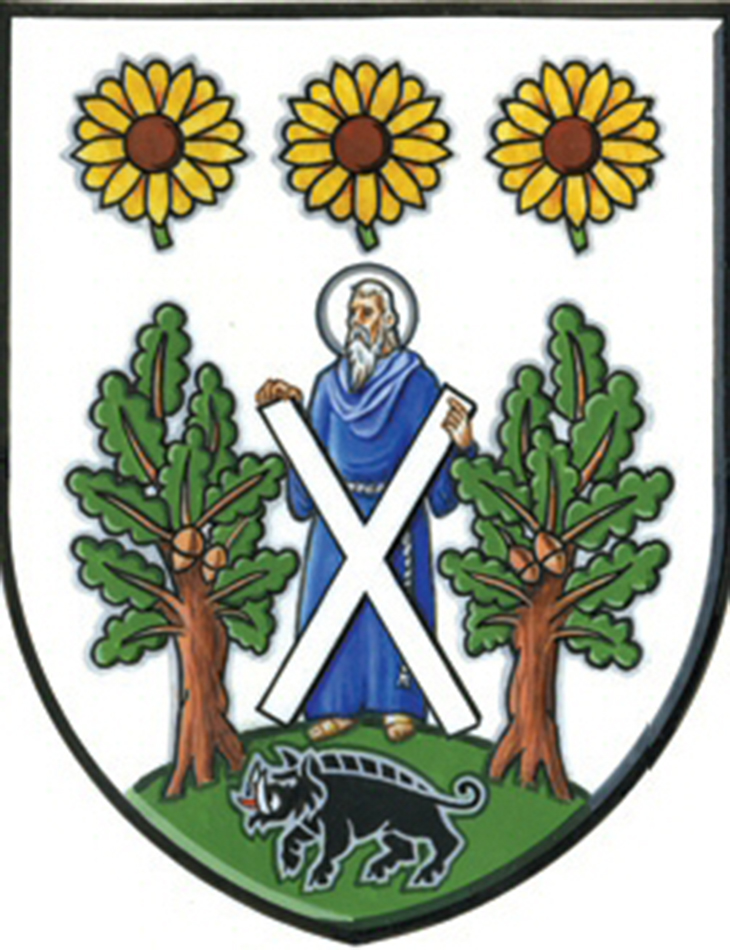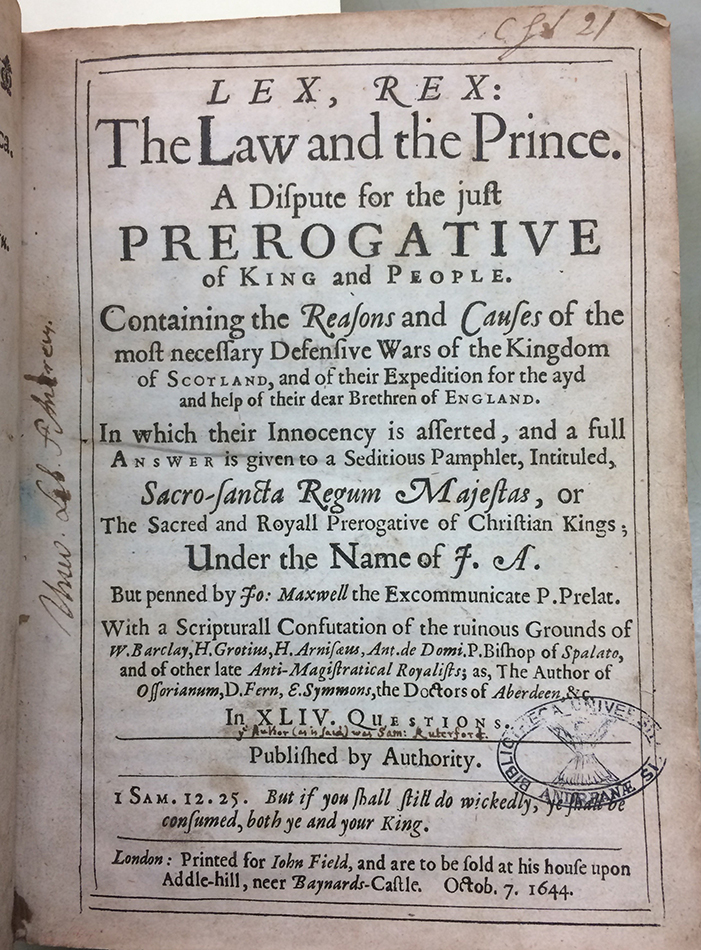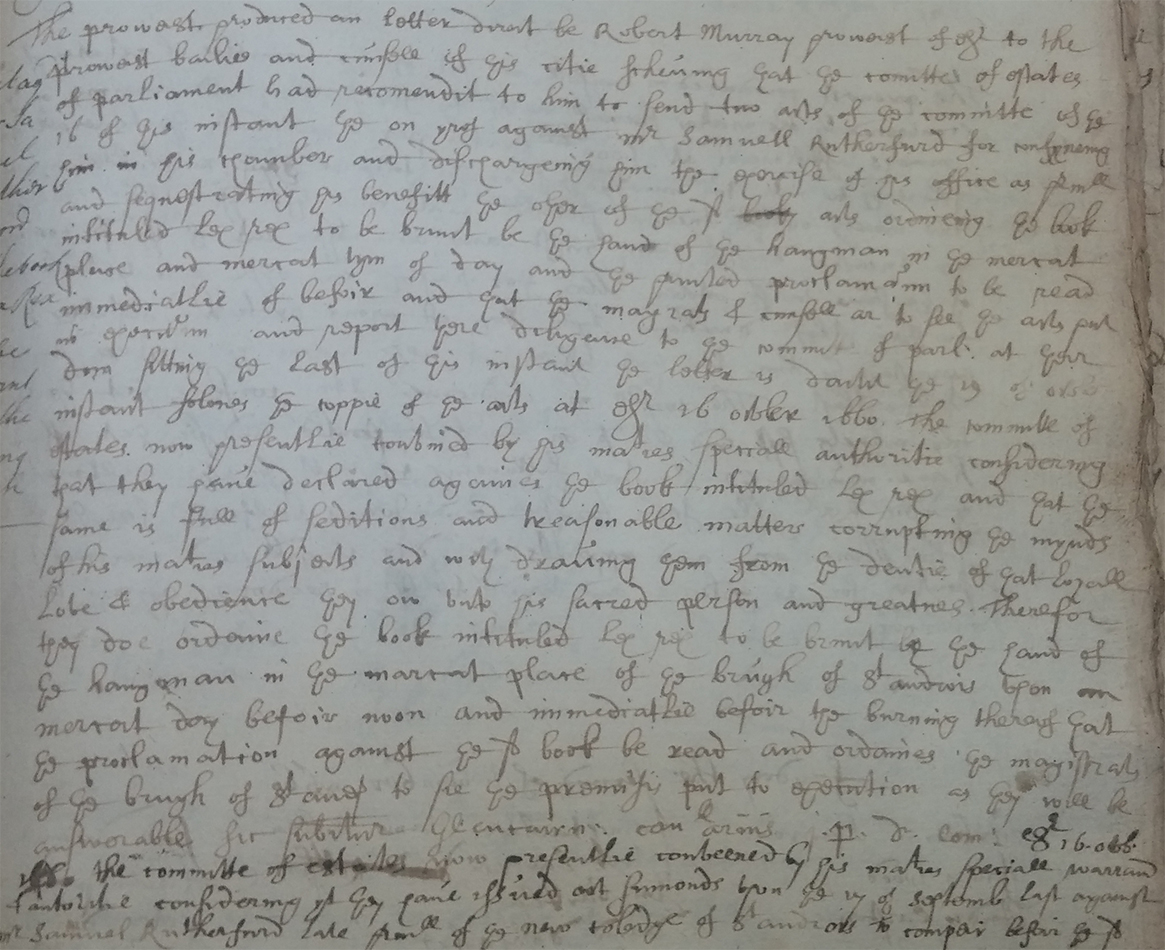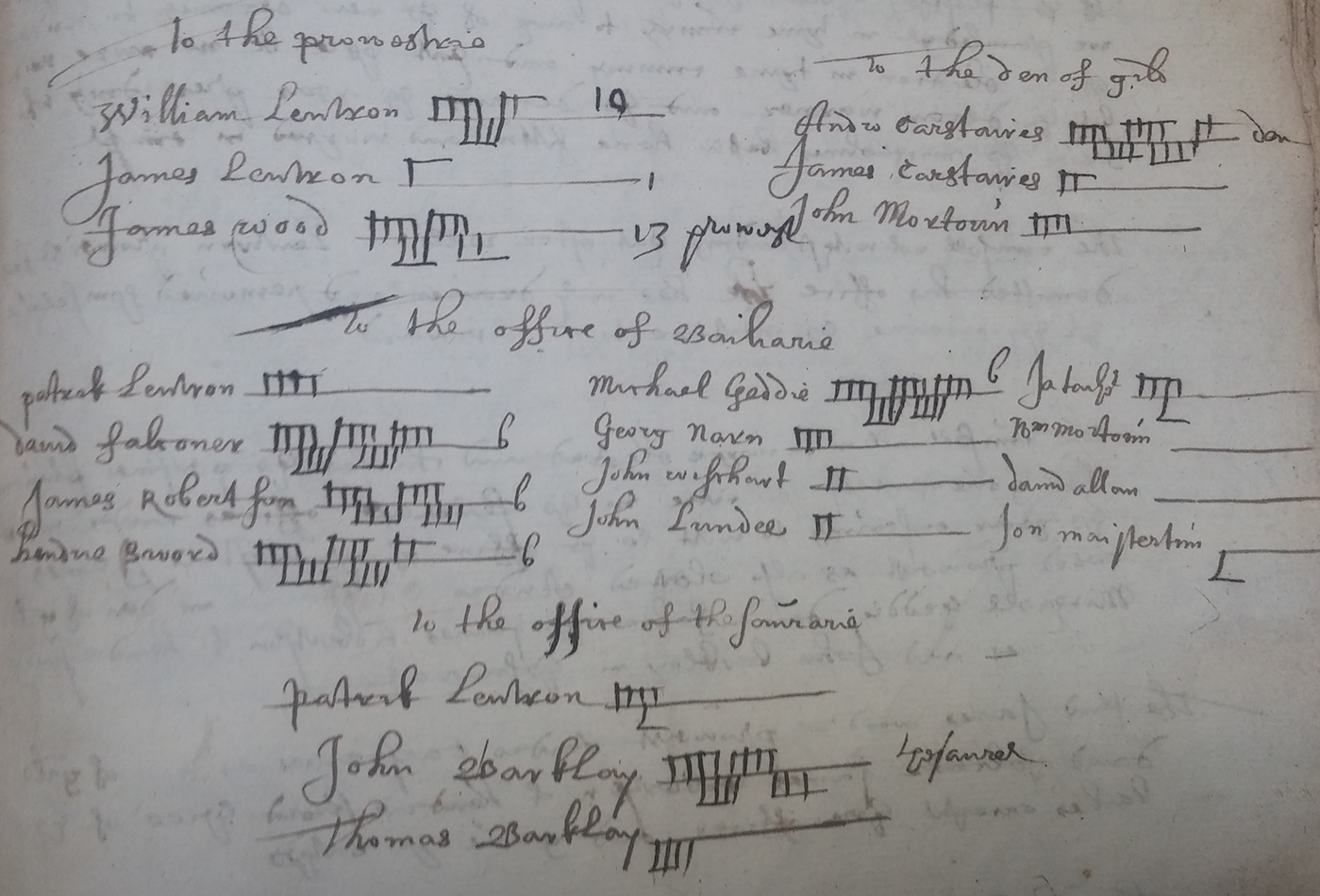Burnwynd Project – snapshots of 17th century St Andrews
History PhD student Rory MacLellan, has been working for the last year on compiling a genealogical index from some of the St Andrews Burgh records, a project supported by the Burnwynd Trust. Here are some of the highlights from the Burgh records he discovered during his project.
If you thought modern Scottish licensing laws were restrictive, spare a thought for the students of St Andrews at the close of the seventeenth century. On 27th July 1697, the town council passed the following act:
The Counsell appoynts the Clerk to drau a proclamatione Dischargeing all the Inhabitants of this Citie and taverns to sell any drink or to keep or harbour any students or schollers of the universitie after nyne of the Clock at night under the paine of ten punds scots toties quoties [each time] The third part to be given to the Informer and the proclamatione to be produced through this City quarterly.”

 This entry is taken from the second volume of the council minutes of St Andrews (B65/11/2). A genealogical index of both this manuscript and three other documents of the burgh records from 1550 to 1700 has recently been completed as part of a project funded by the Burnwynd Trust. The local history funding strand has supported this work, which is very closely aligned to the purposes of the Trust, see https://www.st-andrews.ac.uk/develop-2/burnwynd/foundation.php. This has resulted in an index of 21,676 entries extracted from over 800 pages of manuscript material across four volumes. These volumes, held by Special Collections at the University within the records of the Burgh of St Andrews, are two volumes of the town council minutes, ranging from 1656 to 1671 (B65/11/1) and 1673 to 1707 (B65/11/2), the guildry book of 1604 to 1746 (B65/16/1), and the Convenor’s Book of the Seven Trades from 1594 to 1817 (B65/17/1). For every named individual mentioned in these texts from c.1550 to 1700, their name, occupation, and office has been recorded in the spreadsheet, as well as the date of their appearance and its context, providing a valuable resource to help researchers trace individuals and events in these dense and often poorly-legible manuscripts.
This entry is taken from the second volume of the council minutes of St Andrews (B65/11/2). A genealogical index of both this manuscript and three other documents of the burgh records from 1550 to 1700 has recently been completed as part of a project funded by the Burnwynd Trust. The local history funding strand has supported this work, which is very closely aligned to the purposes of the Trust, see https://www.st-andrews.ac.uk/develop-2/burnwynd/foundation.php. This has resulted in an index of 21,676 entries extracted from over 800 pages of manuscript material across four volumes. These volumes, held by Special Collections at the University within the records of the Burgh of St Andrews, are two volumes of the town council minutes, ranging from 1656 to 1671 (B65/11/1) and 1673 to 1707 (B65/11/2), the guildry book of 1604 to 1746 (B65/16/1), and the Convenor’s Book of the Seven Trades from 1594 to 1817 (B65/17/1). For every named individual mentioned in these texts from c.1550 to 1700, their name, occupation, and office has been recorded in the spreadsheet, as well as the date of their appearance and its context, providing a valuable resource to help researchers trace individuals and events in these dense and often poorly-legible manuscripts.

These documents contain a wealth of information about early modern St Andrews. The Guildry records range from adjudicating disputes between different merchants to giving fines for people selling tobacco in the city, whilst the Council Minutes illustrate how the town was affected by national events, with the late seventeenth century being a particularly turbulent time. In 1658 a Roland Muirhouse was murdered by highlanders near St Andrews. On 16th April that year, the people of the city were fined for their unspecified part in the murder.[1] The burgh responded to the rise of Covenantism by appointing the hangman to publicly burn the Covenanter text, Lex, Rex, on the 22nd October 1660.[2] This tract, which attacked absolutist kingship, was written by Samuel Rutherford, a professor of divinity at St Andrews.

The minutes also record a letter from General George Monck sent to the council in 1660 as he prepared to march into England. The letter does not reveal any of his plans to help restore Charles II to the throne, but instead commands the council to keep order and do nothing to help the exiled king. Perhaps the most dramatic event recorded in the minutes is the murder of Archbishop Sharp in 1679. A week after his death, the council, apparently fearing further attacks, passed an act ordering the councillors and townspeople to arm themselves and requested an armed guard for the archbishop’s funeral.

More local events are also recorded, illustrating everyday life in the city. Taxes were raised, mills repaired, and a new bell dedicated to Katherine Kennedy was acquired for the tower of St Salvator’s chapel. The Council’s officers were elected yearly, normally on or after Michaelmas. The posts up for election were routinely the Provost (head of the Council), the Dean of Guild (head of the city’s craftsmen and traders), Treasurer, and four baillies (the Council’s judicial officers). There were also several ordinary councillors who appear to have been elected for life. The Deacon Convener, who was the elected head of the seven trades guilds of St Andrews, and the Deacon of each guild, also sat on the Council.

The Guildry Book and the Convener’s Book of the Seven Trades are both records of courts regulating trade in St Andrews. The Guildry Book contains minutes of the guildry court, run by the Dean of Guild, whilst the Convener’s Book has those of the Deacon Convener’s Court (or Deacon Warner). It appears that the Convener had jurisdiction only over disputes between the guilds whilst the Dean of Guild held a higher office. His court oversaw the admittance of new guildbrethren, provided welfare assistance for guild-members and their families, and ruled on matters between the guild and the town. As a town councillor, only the Provost was superior to the Dean of Guild in status and responsibility.
A printed copy of the index is now available in the Martyrs Kirk Reading Room. It is hoped that a second phase of the project will be completed by May 2018, incorporating names from the Burgh court book for 1664-75 and digitising the index.
Rory MacLellan
PhD Candidate in the School of History
[1] B65/11/1, pp. 33-5.
[2] B65/11/1, p. 87.
[…] You can read some of the highlights from the Burgh records he discovered during his project in this post on the Special Collections blog, Echoes from the […]